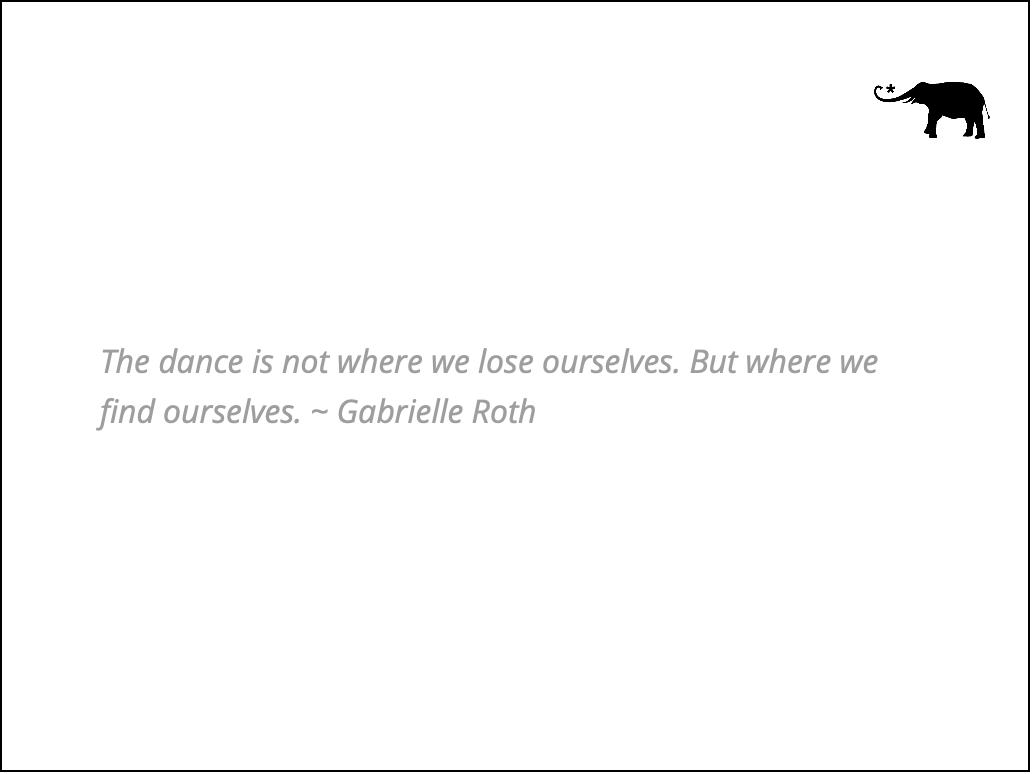Intuitive movement is a practice where the mind, body, and soul come together to create an unfiltered work of art.
Art comprised of emotions, feelings, and thoughts that want to rise and be released at the time of practice.
Using the word ‘movement’ rather than dance is to break away from the rules that dance is bound by. A dancer has to have skill. They also need rhythm, to be able to move on beat—and it has to look good.
I took dance from age five into my teens. I took classical tap; American tap, jazz ballet, Celtic dance, and hip hop. In every style of dance, there was a way to do that style of dance. As you do the moves there were certain ways to carry your body.
Intuitive movement, on the other hand, requires nothing other than our body and willingness to move. It’s an easy, healthy way to discern and locate our feelings within our body and express them; completely rule free.
There are a few ways of doing this:
We begin by dropping into ourselves and exploring how our body feels and what thoughts and emotions are running through our head.
The choice of music can help. Choosing a collection of songs that resonate with us at the time. It could be one song or several. The song choices will be a clear indication of what and how we’re feeling inside, and this makes it easier to locate the feelings within our body.
Another is to simply ask:
>> How do I feel?
>> Where do I feel?
>> How do I want to express that?
Then, whether there’s music or not, we move in the way our body tells us to. We observe our inner self being brought forth through the medium of movement.
It seems so simple, but the power of this practice can bring about radical transformation, particularly if engaged in daily practice.

Here are 3 ways, out of the many, that intuitive movement can transform our inner beings:
1. We make friends with our inner critic.
The inner critic is really an echo of what sorts of things we were told or heard about ourselves growing up.
>> “You can’t dance.”
>> “You look stupid, stop that.”
>> “Stand up straight, what’s wrong with you, for God’s sake?”
>> “What on earth are you wearing? Go change your clothes.”
>> “He’s painfully shy.”
That inner critic will be heard loud and clear, even before you begin to move. It might say you aren’t good enough; to stop being an embarrassment; or you don’t have the body for it.
Through intuitive movement, we separate the mind, body, and soul. We use our soul to lead our movement, and the body carries out the action. The mind continues on and we have the ability to observe everything that is being said with clarity.
All parts of ourselves are present and receptive to each other and we can see these thoughts and feelings, as simply that—thoughts and feelings—and not who we really are.
Just because we thought, “You look stupid doing this,” doesn’t mean we do. It just means we thought that. And because there are no other distractions, we can respond with truth.
“I feel like I don’t know what I’m doing. I feel self-conscious. Thank you for trying to protect me from embarrassment, but I feel safe to try something new.”
We can let our inner critic know its perspective was heard and appreciated, and we are willing to engage in this practice even though we feel uncomfortable (in a sense). Feeling uncomfortable is okay sometimes.
We can make friends with our inner critic. They’ll always be there, but they can be much kinder and more flexible when they are both in understanding of one another. In this way, we can change patterns that span all the way back from childhood. By doing this, we can begin to reframe who we are as individuals.
2. We preserve our health.
In this day in age, it’s easy to remain still. We go out for lunch with friends and sit, then go home and sit, watching TV or playing on our phones or laptops. We go to work and we sit at our desks.
Moving our bodies gets our hearts pumping and, in turn, gets the blood moving through our veins.
Our veins are the highways of our bodies. The blood carries oxygen and nutrients, delivering them to where they need to be. The blood brings waste to the liver and kidneys, to break down. When we exercise, our hearts beat faster and the blood moves quicker.
Granted, we may not feel like moving fast sometimes. We might want to move slow with gentle stretching movements. In this instance, we’re still working out and warming up our muscles.
Think about what happens to bikes or cars if they are left for too long—they seize up and no longer move. The same is true for us. We have to use the functions of our body in order to continue functioning. By moving intuitively, our body moves in a way that best serves us, while also releasing tension and strains within the body; awakening our physical self.
3. We understand our feelings and emotions on a deeper level, and express them.
When we get mad—where in our bodies do we feel anger? What about sadness or happiness? Surprisingly, a lot of people can’t answer this question. We are out of touch with our emotional bodies.
Unsurprisingly, this can often go back to childhood as well, back to when we got overjoyed about something, and squealed, and jumped up and down, and bounced off the walls. We got told to simmer down. If we got angry and wanted to hit or yell or stomp or smash, we heard “don’t you dare!”
Don’t you dare, what? Express emotion?
Hitting people is not okay, but releasing emotions in a physical way is okay as long as it’s safe. Our bodies naturally want to use their physicality to release the sheer amount of energy that is created by big emotions. It’s natural, it’s healthy, and it’s fast.
Any big emotion, even excitement or happiness, has the potential to cause damage in some way. However, intuitive movement can be a safe outlet, a place to release feelings that may otherwise translate into hurtful words, or harmful actions.
There are wonderful benefits from a simple practice that can be as flexible as you need it to be. However, such a simple and adaptable practice can be quite challenging to show up for. Quite a few of my friends have expressed their anxiety in exploring this mode of expression.
At first, we might feel uncoordinated or silly. When I first started this practice, I felt extremely self-conscious and uncoordinated as well. However, when I moved, even though I felt uncoordinated, I was engaging in intuitive movement.
If I felt sexy, I would have moved in a sexy way. If I had felt sad, or furious, or anxious, I would have moved in those ways instead.
We can’t just show up expecting to feel a certain way or think a certain thought, if we aren’t feeling or thinking that way. We can’t ignore what we’re truly feeling. To be released, the thoughts and feelings need to be acknowledged and validated.
As we feel differently, we start to move differently.
With intuitive movement, we learn who we truly are inside. We get curious and dig deep, learning our deepest fears and our deepest desires which stirs our soul. We hear our voice without judgment and become our full selves, all the light and darkness, unashamed and proud.
Let’s truly listen to ourselves in a way that our day-to-day living usually doesn’t have room for.
When we explore this practice for a few minutes a day, we notice just how clear our inner voice becomes. We can hear what it’s saying. Feel what we’re truly feeling. Transform ourselves.
All we have to do, is move.
~

 Share on bsky
Share on bsky







Read 0 comments and reply